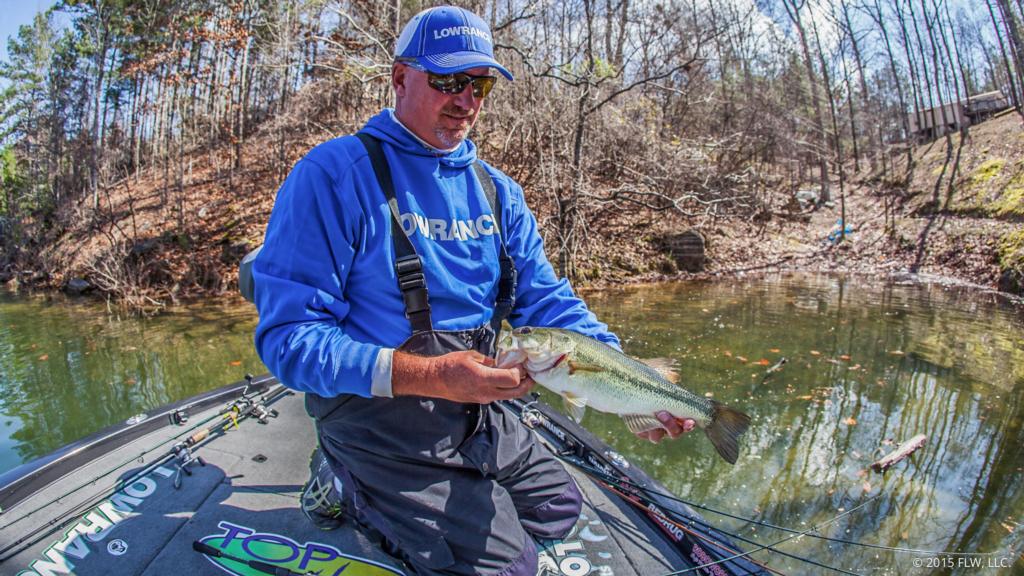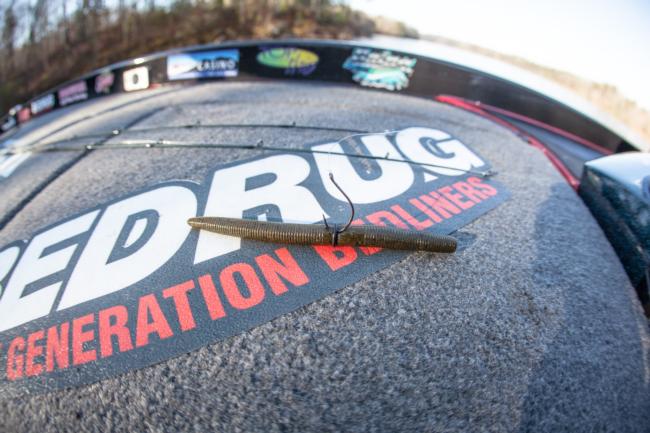3 Super-Easy Techniques to Master
Catch more bass with basic tackle and basic skills

Sometimes the simplest techniques are the best techniques. Take, for instance, the three techniques outlined here. They require minimal tackle, are easy to rig and on many days get more bites than more complex rigs and presentations that require a bit more skill.
Use them to fill a tournament limit, or simply to stretch a line in your free time. Best of all, they work pretty much all year and in almost any type of fishery.
1. Buggin’ with the Biffle Bug
It’s kind of a jig and sort of a Texas rig, but easier to fish than either. A Gene Larew Biffle Bug rigged on the Gene Larew Biffle HardHead makes for a compact creature-style bait that works great for catching fish on offshore structure. It’s particularly suited for coaxing a few extra bites from a school after catching the more aggressive fish on other lures, for bottom fishing in deep water and for tough-bite scenarios.
To fish it, just cast it out, let it sink to the bottom and then slowly wind it back as you might when slow-rolling a swimbait. The combination of paddle-like claws and the jointed head creates a steady, wobbling action. The real key is to keep contact with the bottom. If you lose contact, pause for a second to let it sink back down.
The rig can be fished with any ordinary medium-heavy jig rod over 7 feet long and 12- to 17-pound-test fluorocarbon, depending on water clarity. Other creature baits will work too, as long as they have some appendages that’ll move as the whole rig is reeled in.
A lot of other companies are making similar jigheads, and Strike King and others have models that allow you to change hooks. That’s a great option if you want to fish really small or really big soft baits that don’t match up well with the HardHead hook.
Two words of caution: 1) This rig doesn’t come through brush piles very well, and 2) you will lose fish if you don’t use the proper hookset. The key to keeping them buttoned is to reel up all the slack after a bite, then set the hook hard. If there’s slack in the line when you swing, the bait sort of gets “hung up” in the fish’s mouth, and the hook can’t penetrate.
2. Dropping a Weightless Senko
There’s never been a bass born that won’t eat a Yamamoto Senko. And of the dozens of ways to rig one, a couple of weightless rigs are easiest to fish and deadly in shallow water.
The first is to rig the worm Texas style on an offset worm hook or offset wide-gap worm hook. It’s the top choice for grass, laydowns and other snaggy cover, or if you’re too stubborn to part with your baitcasting tackle. Yes, it can be fished on a medium-heavy baitcasting rod – use one shorter than 7 feet for skipping docks and one about 7 feet, 3 inches for casting and pitching. Pair it with 12- to 17-pound-test fluorocarbon.
The second rig is a wacky rig. A regular Senko will work fine, but the Big Bite Baits Wacky Stick is a clever adaptation. It’s molded with a rubber O-ring in the middle of its body. Pierce the hook through this O-ring and the worm will stay in place even if the plastic is shredded.
A 7-foot, medium-power spinning rod with 30-pound-test braid and an 8-pound-test fluorocarbon leader is a good choice for the wacky rig.
To fish either weightless rig, skip the worm under obstructions or cast it to a target, and let it sink – simple as that. If you’re fishing a little deeper water, stick a nail weight in one of the tails.
The key is to watch the line as the worm slowly sinks. If a fish bites, usually the line will jump or stop sinking down, or it might start “swimming” away. Reel up and set the hook.
3. Winding a Little Swimmer
This swimbait method is uber-simple. It starts with a small soft-plastic swimbait such as the 3-inch Big Hammer or a 3- to 4-inch Keitech. Because both have ample tail action at slow speeds, but aren’t likely to burn out at fast speeds, they’re very versatile. They’re also forgiving if rigged a little off-center on a jighead. Stick with shad colors in most lakes.
In shallow water, opt for a spinning rod with 30-pound-test braid and an 8-pound-test fluorocarbon leader for casting the bait on a 1/8- to 3/32-ounce jighead. Heads with wire weedguards keep the plastic in place securely, and a light-wire hook will penetrate more easily without having to really slam the hookset, which could break the light leader.
For deeper water or schooling fish, upsize to a head that’s 1/4 ounce or heavier, with a heavier hook, 12- to 15-pound-test fluorocarbon and baitcasting tackle.
This small-swimbait technique is sort of a finesse adaptation of swimbait fishing, and it gets a lot of bites when crankbaits and spinnerbaits might not. Thus, the best presentation is to cast it out, count it down to the strike zone and wind it back as slowly as possible – slow being the key factor.
It’s great around riprap and for schooling fish. It’s also a dynamite pond bait. Though, around heavy grass and wood cover, you might be better served by a hollow swimbait rigged with a weedless hook.


